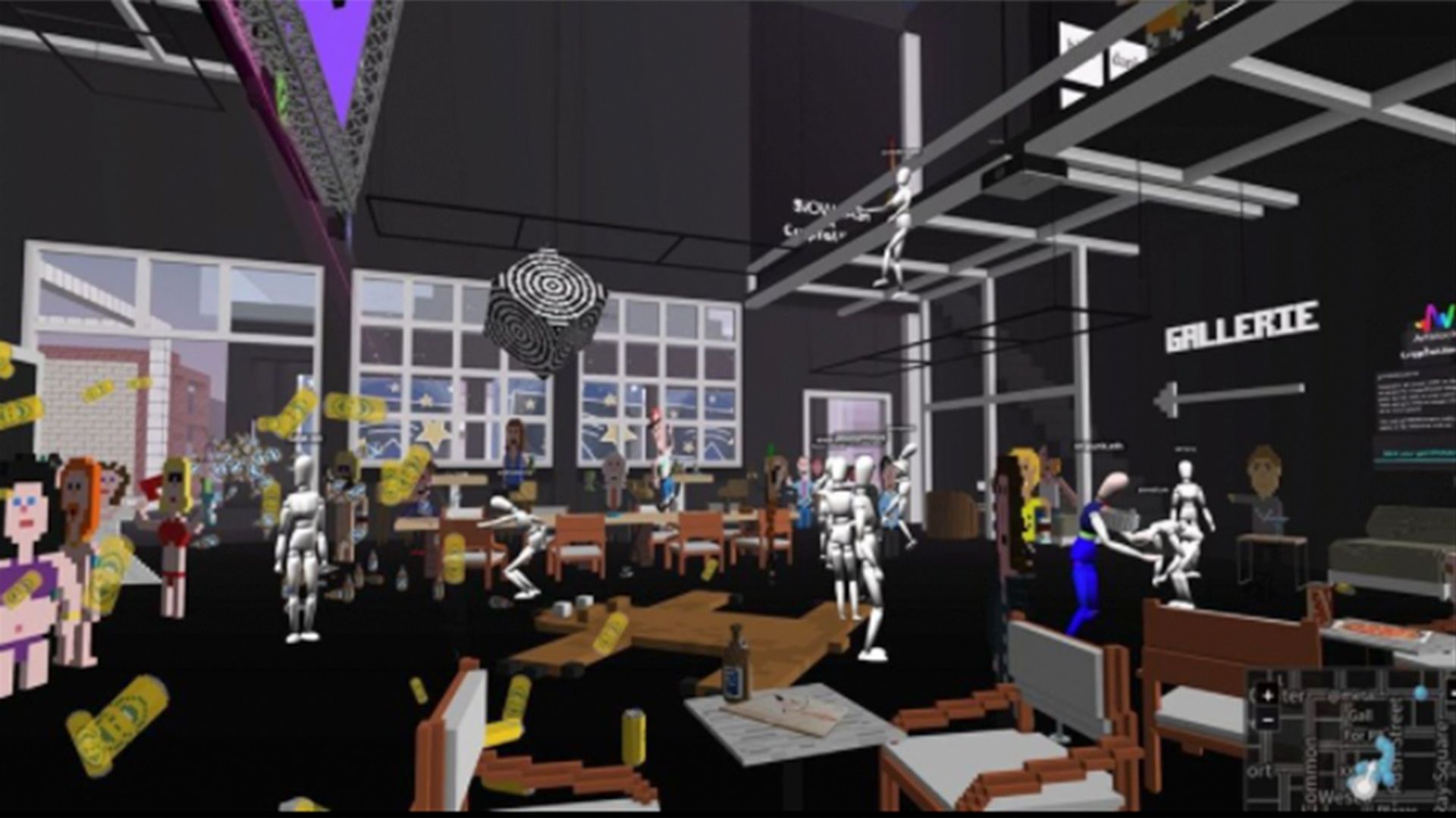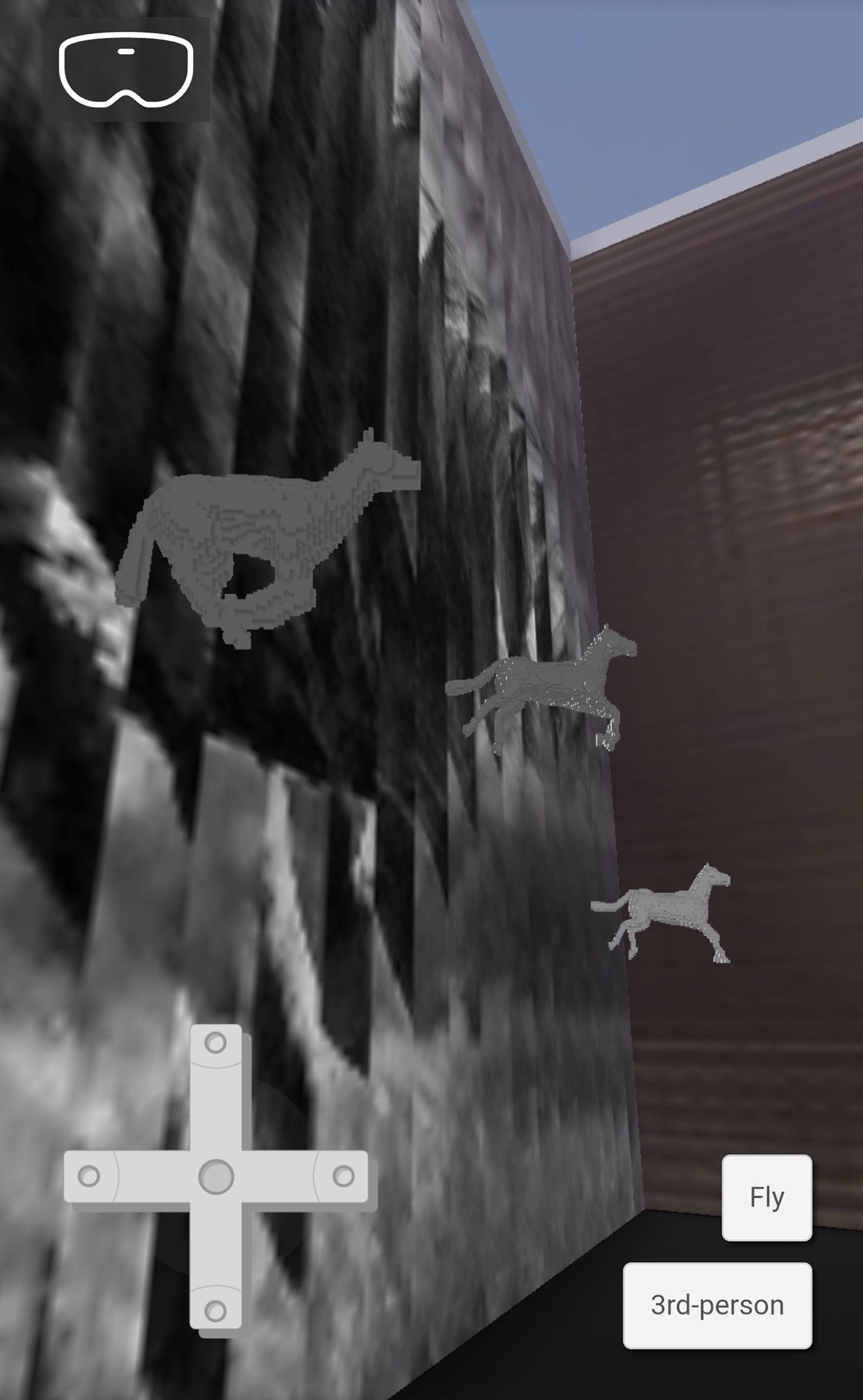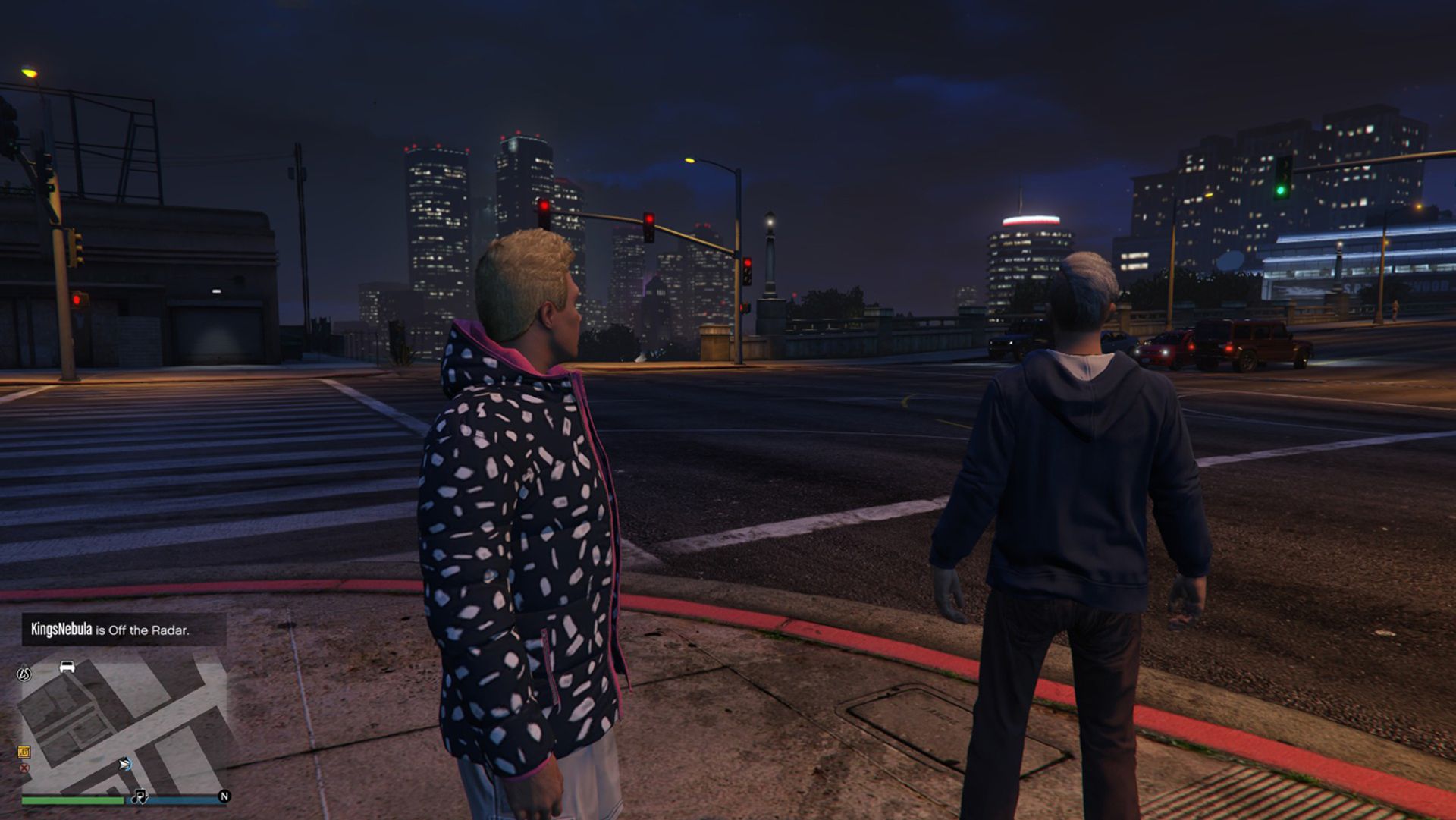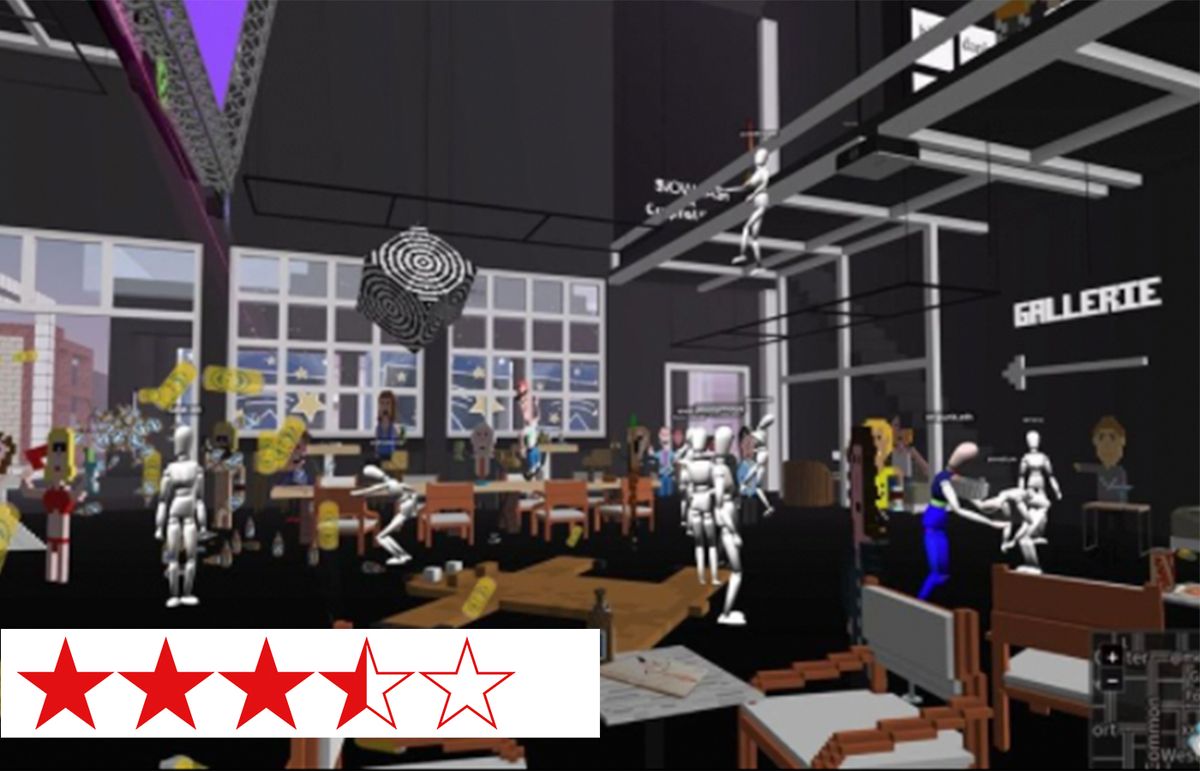What is the metaverse?
A virtual world.
Who owns it?
The company Meta would really like to own it. On 28 October 2021 Facebook officially changed its name to Meta in the hopes of becoming synonymous with the technology and experiences of virtual worlds. Each metaverse is owned by different companies or individuals. Many metaverses, such as Decentraland and Cryptovoxels, allow users to buy and own parcels. Parcels are SimCity-like plots of digital land that they can create digital structures on. For example, König Gallery owns a parcel in Decentraland and Unit Gallery has its own metaverse though its platform institut.co on Arium. Stuff in the metaverse—digital stuff, like NFTs and digital clothing for your avatars—can be owned by anyone.
Who creates it?
Metaverses allow creators to make digital goods in 3D programs such as Unity and MagicaVoxel. The NFT-certified ownership of these goods is out there on the blockchain, and not dependent on the metaverse.
Curator's note
Gretchen Andrew
I write this upon returning from (or closing the browser tab for?) a party in the metaverse. Or possibly I mean “a” metaverse as there are many. This particular metaverse party was in Cryptovoxels, which is powered by Ethereum, hosted by Snowca$h at Crypto Wiener’s parcel. My avatar wore a flower wreath wearable.

Wearables are optional in the metaverse
Let me break that down.
- Metaverse: A virtual world where users/players can often build and import digital goods such as NFTs
- Cryptovoxels: A metaverse popular with art galleries and museums including San Francisco Museum of Modern Art and the FC Francisco Carolinum Linz, Austria. Players can buy land and build stores and art galleries. Editing tools, avatars and text chat are built in.
- Ethereum: Both Bitcoin and Ethereum are built on blockchain technology but have different databases of record. Because Ethereum is more programmable it is used to make the smart contract that powers NFTs and other decentralised applications.
- Snowca$h: A touring NFT exhibition curated by Georg Bak and Daniel Baumann that will be inaugurated at Kunsthalle Zürich in October 2022. Referring to the late Cyberpunk novel Snow Crash by Neal Stephenson, this exhibition takes place in a physical exhibition space as well as in multiple metaverses (multiverse).
- CryptoWiener’s parcel: CryptoWiener is a crypto collective from Vienna. CryptoWiener creates generative art projects that are entirely “on chain”—meaning that they are entirely backed by blockchain technology and not reliant on the endurance of any secondary platform for their perpetual survival and validity. They own a digital parcel on Cryptovoxels, where they can build, upload and host events.
- Avatar: A 3D representation of yourself that can move and dance around the metaverse.
- Wearable: When you first arrive in the metaverse you will look just like everyone else. Metaverses often allow you to create and/or purchase digital clothing.
When we started The Art Newspaper's XR panel back in 2020 we were looking mostly at digital environments exhibiting physical artworks that had been digitised, whether through scanning, photography or 3D stitching—physical work shown in digital spaces. Metaverses, by contrast, generally show digitally native artworks such as NFTs.
From the standpoint of existing technology, there isn’t actually that large a difference between a robust VR platform like Vortic (which allows for avatars, interaction, digitally native work and events) and a “metaverse”.
What separates the best VR platforms from metaverses is VR’s attachment to skeuomorphism, a design term that denotes where an object in software mimics its real world counterpart. (The “trash can” for throwing out files, for example.)
A notable exception is New Art City. I spoke to Sammie Veeler, the co-founder and gallery director, about New Art City’s relationship to the concept of a metaverse.
“As I understand it, the metaverse refers to the totality of virtual worlds and assumes a level of interoperability that I don't really see existing in practice," Veeler says. "In a lot of ways the metaverse seems like a dream or a marketing campaign for a dream that still isn't here yet. I would call New Art City a node in the metaverse, a virtual world that allows people to create more virtual worlds.”
In a lot of ways the metaverse seems like a dream or a marketing campaign for a dream that still isn't here yet.Sammie Veeler, co-founder, New Art City
The metaverse is, right now, mostly a promise. But a tenuous one. The question of who will control its narrative involves Big Tech and the crypto community, as well as the arts. This is why I love the artist Thomas Webb. He’s just building his own.

In the metaverse, you can opt to fly
Whose virtual hand should your avatar hold as you enter the metaverse? You could try the following:
Anika Meier —One of the metaverse's most important curators.
Thomas Webb —An artist making his own metaverse.
Snowca$h —An exhibition about the metaverse hosted by a major European museum.
The metaverse is, right now, mostly a promise. But a tenuous one. The question of who will control its narrative involves Big Tech and the crypto community, as well as the arts.Gretchen Andrew
We say
“The metaverse is a consensual group hallucination that straddles the real and digital worlds where participants seamlessly interact with environments, data and other life forms—untethered from physicality, locality and linear time.”
A collaborative definition created by XR panellist Dhiren Dasu from William Gibson’s Neuromancer series and Neal Stephenson’s Snow Crash.
The XR panel's ratings
How important is the metaverse to the future of the art world?
Gretchen Andrew gave a rating of 3/5 stars.
Carole Chainon gave a rating of 5/5 stars.
Dhiren Dasu gave a rating of 3/5 stars.
Robert O'Leary gave a rating of 4/5 stars.
Eron Rauch gave a meta rating of meta-1 star for the metahype about the metaverse and meta-5 stars for the amazing artists metaworking in these metamodes. Giving a mean average rating of meta-2/5 stars.
Tina Vaz gave a rating of 5/5 stars.
Making a combined rating of 3.5/5 stars
What examples of art in the metaverse would you recommend?
Dhiren Dasu: cryptovoxels.com
Cryptovoxels is one of the more easily accessible entry points into the metaverse. It hosts pop-up and “permanent” galleries that can be accessed through a desktop browser, phone or headset. Navigation is straightforward and a “fly” option allows for a bird’s eye view. Third person view is also quite engaging. Galleries generally feature a mix of 2D art hanging on a wall as well as 3D objects. Objects are clickable for a detail view that usually leads to an NFT marketplace as well as to relevant social media channels.

An avatar looking for connection in Cryptovoxels
In all respects, this is a functional version of the metaverse that checks all the boxes of interactivity, interaction with others, access to data and art. The quality of the experience will vary on the hardware used and the speed of the internet connection. The thrill of this is akin to the first Internet Relay Chat (IRC) channels and AOL chat rooms that I stumbled into in the mid 90s. It's not quite prime-time yet, but surely the metaverse will soon be a vast connected space that will start approaching our science fiction renditions.
Carole Chainon: Substrata
One of the past exhibits reviewed by the XR Panel which illustrates the potential of the metaverse is Substrata by Epoch Gallery. The experience takes the user to another environment, immerses them and provides agency. The sense of presence is achieved as it feels like a real-life experience visiting an unknown location.
The space itself becomes virtual art that users interact with. High-fidelity avatars and social interactions are among the improvements that would further bolster its metaverse qualities. In the end, we leave Substrata with ingrained memories, just as we do in real life, and the feeling of having experienced an art show. This one just happens to be in the digital world, or the metaverse.
Robert O'Leary: Dancing in the Metaverse (Live Performance, part of Being Human Festival, 11-13 November 2021)
In this first of three structured, yet un-choreographed vignettes, dancers wearing motion capture suits—two in the UK (the foxes) and one in New York (the nymph)—create music, perform and move in real-time inside a shared digital space.
Intimate interactions occur within this computer-generated environment and are projected in real time on the walls around dancers and a live audience. Experiencing this live is part of what makes Dancing in the Metaverse so exciting. We are immersed in a blended performance that explores the complex relationship between virtual and physical touch.
Using Goldsmith's (University of London) newly developed Mocap Streamer,—which streams live motion capture data over the internet, allowing users from multiple remote locations to interact—the dancers subvert notions of conventional live performance. Present in front of us, they perform collectively across continents. They are embodied avatars within generative landscapes, responding to fellow dancers virtual, rather than physical, movement.
We are immersed in a blended performance that explores the complex relationship between virtual and physical touch.Robert O'Leary
Eron Rauch: Kent Sheely's "metastudio"
Rather than examine a singular art piece, it felt more apt to do a studio visit—a visit to a metastudio, as it were—to glimpse the future of art.
Kent Sheely is an artist (and friend) who has been working deep in this nascent digital, multimodal way of being for almost two decades. His works land somewhere between video art, guerrilla theatre, machinima-cinema-verite, gonzo documentary, and Warhol’s static films.
I entered what you might call Kent's "metastudio"—after $25 to Steam, a YouTube tutorial, a Twitch virtual people-watching session, a 100GB download, some texts, and a membership to the “Rockstar Social Club” and a Discord call—and found myself cruising by the beach in the passenger seat of a virtual grey Honda Civic. As Kent drove, he explained that this car was the closest Grand Theft Auto Online (GTAO) had to his real car and that it was his choice for driving when he was making art. Asked why he moved from making art with more static game experiences into the messy and sometimes dark metaverse progenitors like Gary’s Mod and Grand Theft Auto Online, he answers “Because you never know what you’re going to see [here].”
A critical aspect of why GTAO represents a proto-metaverse is the ambiguous, quotidian possibilities afforded by its space. For a while, Sheely just drove a bus around and picked up other players, while I sat in the seat behind him and we continued talking about his work. To put a fine point on it: in the metaverse, you can be bored. You can have the freedom to design a shared social experience around boredom, and boredom is a perfectly viable instigator of creative engagement.

Grand Theft Auto Online represents a proto-metaverse in the ambiguous, quotidian possibilities afforded by its space
GTAO is not the metaverse, it is but a seed that might spawn a few aspects of it. The modes in which artists like Sheely create works highlight that we should be paying attention to multi-modal art, not just multimedia; connections variable; not just dimensions variable; interstitial activity, not just interactivity. The freedom of “wrong” play and community “boredom”, of a communication ecosystem taking place in a dozen valances at once, are the seeds of metaverse art deep in Sheely’s work.
Tina Vaz: Everything
David O’Reilly’s video game Everything (2017), with narration from recorded talks by Alan Watts, has stayed with me as an exemplar of the values and philosophy with which the metaverse can be developed.
Gaming will be at the heart of metaverse creation, and Everything shows how game-based experiences can be created purposefully to transform our collective consciousness. Its emphasis on a universe of interdependence where “every event is essential to the whole thing” provokes new ways of seeing, thinking and interacting that are essential to empathy.
Everything embodies an urgent message that artists and thinkers can send to builders of the metaverse: “This is a big jazz, this world.” Build accordingly.
How important is the metaverse to the future of art?
Dhiren Dasu: The metaverse is the proverbial perfect storm of experiential technology poised at the juncture of art, entertainment, social media and crypto currency. It has the potential to revolutionise the art world. Storage, location, display, transparency, authenticity and accessibility are the stumbling blocks to experiencing or owning fine art. The metaverse provides a platform for creators, commentators, critics, galleries and collectors to transcend all of these issues.
The experiential immersion of connected XR experiences is an epochal shift that is orders of magnitude greater than the current relationship between tech and art. The metaverse presents a possible future where creators, gallerists and collectors can actually interact in a space untethered from their physical location. In keeping with tradition, collectors can accumulate art that reflects their personal aesthetic and as stores of generational wealth.
Except that, in the metaverse, they can share that art with all netizens—not just a select group in their town. Artists get access to larger marketplaces and collectors still get to “flex” with their personal metaverse museums. Ideally, authentication is solved by blockchain protocols where ownership and pricing are transparent.
Artists get access to larger marketplaces and collectors still get to “flex” with their personal metaverse museums.Dhiren Dasu

Gaming will be at the heart of metaverse creation
Carole Chainon: The metaverse will revolutionise the way we experience the internet. Our tangible, physical world will become increasingly mixed with the virtual.
It will impact all industries just as the internet did in the early 90s and, by extension, it will impact the art world. The metaverse was and will be shaped in great part by the art world, as artists’ vision of the metaverse have been brought to life in popular culture for the last decades. Now, the technology is ready to follow.
The metaverse was and will be shaped in great part by the art world, as artists’ vision of the metaverse have been brought to life in popular culture for the last decades. Now, the technology is ready to follow.Carole Chainon
Galleries will have to adapt to display these forms of creations to reach their current or new audiences, which has already been the case for many as we’ve covered in our XR reviews. Even in the age of the metaverse, there will remain a healthy market for physical artworks to be displayed on tangible walls, just as there are still physical paintings and newspapers being sold.
Robert O'Leary: Online viewing rooms feel stale, because art, as opposed to commercial exchange, overwhelmingly relies on embodied experience. In the translation of ideas from physical to virtual, we lose our sense of touch, place, and arguably our individual relationship with the work. Our lives might be increasingly digitised, but our relationship with art (despite the NFT hype) is still largely physical.
The metaverse offers us a solution to this problem; through the potential of embodied virtual experience. This presents a radical moment for all forms of art, as gaps between "virtual" and "real-life" experiences are blurring.
Art is inherently subversive, the metaversemust be too.Robert O'Leary
However, despite this undeniably disruptive technology, the potential of the metaverse could remain unfulfilled. We need more grassroots open source programmes, like Goldsmith’s Mocap Streamer, cheap and readily available software for artists and creators. Technologies need to be pulled together through international, hackable and diverse networks; not homogenised corporate platforms. Art is inherently subversive, the metaverse must be too.
Eron Rauch: “Metaverse.” I shudder as only someone who grew up a teen “webmaster” in Web 1.0 and has endlessly seen the rabid fanaticism and quick demise of endless techno-marketing-buzzwords and related stocks can. But there is, truly, a new mode of engagement with the internet and computational technologies emerging.
Whatever we end up calling it, large chunks of people are emerging from a Web 2.0 mode—controlled platform, 2D-screen based, entertainment-driven, bidirectional—and engaging with a broader mode of internet practices and tech, a more heterogeneous, ambient, omnidirectional and simultaneous ecosystem. Or, more simply: The metaverse isn’t any specific thing. It’s just a hazy time period where historians will demarcate the next big expansion of some of humanity’s internet, computer practices and technologies.
The metaverse isn’t any specific thing. It’s just a hazy time period where historians will demarcate the next big expansion of some of humanity’s internet, computer practices and technologies.Eron Rauch
As with Web 2.0, the metaverse will see new art, art display and art money practices mutate into both glorious places unknown but old artistic (and economic) practices won't be fully replaced. The rich get richer. The cryptorich get... But while it’s hard to imagine prices for physical art decline, our new quality of daily life in the unfolding metaverse-ish-mode will change what we see as the most exciting, relevant art.
Tina Vaz: With its focus on experiences and its potential to address the structural barriers and inequities of physical life, the metaverse has the potential to be radically transformative for art and the art world.
We’re still years away from fully realising the metaverse, but the art world should engage now, to avoid missed opportunities from previous iterations of the internet revolution. We’ve already witnessed industry-wide impact that artists have made by raising awareness of the environmental footprint of NFTs. The art world can and should continue to have a say in how the metaverse is designed and built. A recent report estimated that only 16% of NFTs currently on the market have been created by women. On the cusp of this technological revolution, it’s critical that artists, designers, and cultural institutions participate in and lead conversations that can help the metaverse become more inclusive and equitable, with the tapestry of human experience built into its DNA.
On the cusp of this technological revolution, it’s critical that artists, designers, and cultural institutions participate in and lead conversations that can help the metaverse become more inclusive and equitable, with the tapestry of human experience built into its DNA.Tina Vaz
The Art Newspaper’s XR Panel
Gretchen Andrew is a Search Engine Artist and Internet Imperialist who hacks powerful systems with art, code and glitter. You can see her current metaverse exhibition on Cryptovoxels.
Dhiren Dasu is a digital media creator and consultant. His areas of speciality include photography, film, virtual space, graphic design, visual effects, animation and audio production. Dasu, in his fine art persona as Shapeshifter7, makes works that echo and recompose the architectural spaces he photographs, turning them into immersive spaces while exploring the nexus of photography, collage, symbols and perception.
Carole Chainon is the co-founder of JYC, an XR development and production studio based in LA with a presence in Europe, creating XR experiences for the entertainment and enterprise sector. She is also a digital artist and paints under the atelier KONG brand. Her digital works have been exhibited in Paris, France, and she recently showcased her paintings in Santa Monica, California.
Eron Rauch is an artist, writer and curator whose projects explore the infrastructure of imagination, with a focus on subcultures, video games, and photography history.
Robert O’Leary is an artist and production designer whose work explores redemption, rebirth and political decision making.
Tina Vaz is the head of Open Arts at Meta, a global commissioning, design, and programming initiative that curates and creates art-related experiences for Meta spaces, products and experiences.


